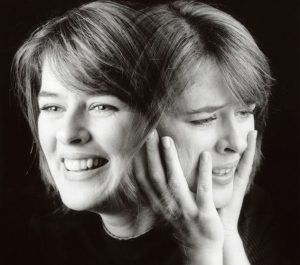Bipolar Disorder And Eating Disorders
 Individuals with bipolar disorder appear to be more likely than others to develop an eating disorder. Approximately 5.7 million American adults have bipolar disorder, a mental illness characterized by frequently changing moods that alternate between manic “highs” and depressive “lows.” Eating disorders affect about 4 percent of the population, according to the National Institute of Mental Health.
Individuals with bipolar disorder appear to be more likely than others to develop an eating disorder. Approximately 5.7 million American adults have bipolar disorder, a mental illness characterized by frequently changing moods that alternate between manic “highs” and depressive “lows.” Eating disorders affect about 4 percent of the population, according to the National Institute of Mental Health.
A study published online in the Journal of Affective Disorders in July of 2010 found that more than 14 percent of 875 bipolar patients surveyed also had an eating disorder. Binge-eating disorder was the most common with 77 patients, followed by bulimia nervosa with 42, and anorexia nervosa with 27.
Eating disorders occurred in more severe cases of bipolar disorder
Those with an eating disorder were more often women than men, and they tended to have a more severe case of bipolar disorder than the others. They experienced more mixed episodes, more prior episodes, more rapid cycling, and more suicide attempts. They were also more likely to have a family history of mood disorders or substance abuse.
Dr. Susan L. McElroy of the University of Cincinnati College of Medicine led the study with her colleagues. She commented:
“Substantial clinical and community data indicate that bipolar disorder co-occurs with substance use, anxiety, and impulse control disorders, and that these comorbidities are associated with negative effects on the course, outcome, and treatment response of bipolar disorder. Another comorbidity which has received far less systematic attention but which may also be important is that between bipolar disorder and eating disorders.”
Source: PsychCentral
 Eating Disorder Self Test. Take the EAT-26 self test to see if you might have eating disorder symptoms that might require professional evaluation. All answers are confidential.
Eating Disorder Self Test. Take the EAT-26 self test to see if you might have eating disorder symptoms that might require professional evaluation. All answers are confidential.